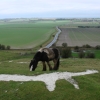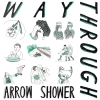
- HOME
- ABOUT
- ARTISTS
A.P.A.T.T. APOSTILLE BAMBOO BARR BERTIE MARSHALL BIRD NAMES BRONTEZ PURNELL BUFFET LUNCH CHESTER ENDERSBY GWAZDA CHOPS CLEAR HISTORY CLECKHUDDERSFAX COLD PUMAS CONSTANT MONGREL DARLENE SHRUGG DEATH SENTENCE: PANDA! DEERHOOF DOG CHOCOLATE DRUM EYES EARTH BALL ED SCHRADER'S MUSIC BEAT ES ESQUILAX FEATURE FOOT VILLAGE FORMER GHOSTS FUTURE ISLANDS GAY AGAINST YOU GARY WAR / PURPLE PILGRIMS GEN POP GENTLE FRIENDLY GOWNS THE GREEN CHILD GUTTERSNIPE HALO HALO HANDLE HANDS ON HEADS HASH REDACTOR HELHESTEN HIGH PLACES HISTORICALLY FUCKED HYGIENE KAPUTT KIT LEOPARD LEG LINDA SMITH / THE SMASHING TIMES LUCKY DRAGONS LUNCH LADY MARCEL WAVE JOHN MAUS ME LOST ME MUNCH MUNCH NAKED ROOMMATE NICFIT NO AGE NO BABIES NORMIL HAWAIIANS NOTS NUMBERS PARSNIP PEEPHOLES PEGA MONSTRO THE PHEROMOANS PHILIP FROBOS PIKACYU-MAKOTO PLEASE PLUG PRIMO! QUINIE RAT COLUMNS RATTLE RAVIOLI ME AWAY RED CHANNEL ROBERT SOTELO ROBERT SOTELO & MARY CURRIE SAUNA YOUTH SCREENSAVER SHAKE CHAIN SILVER FOX SCHOOL DAMAGE SOFTBOILED EGGIES SOILED MATTRESS & THE SPRINGS SLEEPER AND SNAKE SPIN SPIN THE DOGS SPRAY PAINT THE STICKS TERRY T.I.T.S THE TOADS TRASH KIT TRENCHER VEXX VINTAGE CROP VITAL IDLES WAY THROUGH WATER MACHINE WETDOG THE WHARVES THE WORLD XIU XIU XIU XIU / PARENTHETICAL GIRLS YIKES
- BLOG
- LINKS
- SHOP
- TOURS
- TICKETS
MEDIA
|
HI RES DOWNLOADS |






















|
|
Photograph 1 by Randy Randall. |
BIOGRAPHY |
WAY THROUGH are Claire Titley and Christopher Tipton, a pastoral punk duo originally from Shropshire, now residing in London. Informed by the field as much as the flyover, Way Through write songs which phase in and out with guitar, tapes, damaged drums and vocals. Using wrong-footed repetition, rapid interplay and free-looping happenstance the band create a ragged yet intuitive tapestry of sound. Way Through's critically well-received debut 'Arrow Shower' was released on Upset The Rhythm in 2011. Its songs walked the streets of market towns and focussed on how personal experience affects our perception of a shared landscape, haunted by inward territories. They then followed up their album with a deep map of East London's Bethnal Green, captured in text, photographs and music, which The Wire described in an interview with the band as "a guided walk through the mythologised outposts of ordinariness... a project rich in topographical lore." The Quietus added that Way Through "document and create another version of place that somehow seeps into the space between reality and urban fantasy." Last year saw an immersive cassette album, entitled 'Enclosure', released by Comfortable On A Tightrope. After which Way Through were invited by Resonance FM to work on a processional piece of music that saw them navigating Tate Britain channelling songs. Throughout this time the band became increasingly interested in submerging their work fully in the places they found potent. Spending most of the year conducting field research, travelling about the country, taking field recordings, they gathered their thoughts, notes and songs straight from their source. This has resulted in their new album 'Clapper Is Still', an itinerant album of 13 songs located in the particular places each was written. |
RELEASES |

'CLAPPER IS STILL'
UTR060 | CD / LP | 13 tracks, 53 minutes 'Clapper Is Still' is a bold record, concerned with the vast array of elegiac components Way Through have discovered locked within the English landscape. It peers into the overlapping histories that persist in these places and tries to reconcile how they are experienced together. "I retread the circle in this heavy field, sometimes it's hard, to tell it, from what's real", so begins the album, with "Dedham Vale", a track fascinated by the artificially managed aspect of the Stour Valley, made famous by Constable's paintings and as a result frozen in time via tourism. The song adopts the rhyme scheme and tenure of traditional folk song to further underline the troubled notions of authenticity in connection with heritage. "Stoke Poges" is a fizzing pool of pitched keyboards, and faltering samples, trapping a vocal focussed on the nature's ability to quietly regenerate alongside the evolving stories of this famed parish. "Imber & Tyneham" compares and contrasts two villages taken over and claimed by the MOD during WWII - one still actively used by the military for combat training on the Salisbury Plain, the other fast becoming a preserved time capsule in rural Dorset trapped throughout most of the year in a live firing zone. The song is a heady rush of staccato guitar and snare rattle, full of "unexploded debris", "corrugated rooftops" and "halted firing" as Tipton calls out. "Westonzoyland" and "Eyam" both see Titley pick up the vocal narrative. The former song detailing a journey across a Civil War battlefield, the latter a walk around the Derbyshire plague village of Eyam. "Westonzoyland" reels across time, imagining the battle raging amongst the "70's bungalows, chain-link fencing and pedestrian chicanes". A wash of violin skips across the track whilst Titley seeks parallels between a felt-tip memorial poster for a local teenager to the stone ediface commemorating the dead in the nearby fallow field. "Eyam" spins through cycles of swelling ambience and reverbed recordings, allowing Titley's vocal to take a morbid journey past the doomed cottages of self-sacrifice. "Heritage stasis remains" she insists as a field recording of a stooping display hawk envelops her. As well as their frequent use of field recordings to embellish their songs, Way Through also rely on found text to hang their songs on, like with the broken gravestones of Yorkshire's deserted "Wharram Percy" or the graffiti scrawled across the vandalised info-board on "Whiteleaf Hill" - a place where bike tyre tracks leap across barrows, and where a colossal hillside chalk cross draws you towards the steep abandonment of meaning. "Sipson" makes for a modern day comparison point, threatened with Heathrow's impending third runway, becoming a virtual ghost town of "bursting ragweed" and "daubed black letters on makeshift banners" betraying "a sad suburban echo". "Roughting Linn' is decidedly motoric for Way Through - the guitar clings to its repeated chord for dear life whilst the drums tumble relentlessly onwards, eventually the song mimics its subject, getting stuck in a galloping groove which dissolves slowly into the distance. Roughting Linn is an outcrop of rock in Northumberland that's carved all over in prehistoric patterns, mysterious and very much unknowable, off the map and withdrawn. "Paths leading everywhere in hope of finding, No more signs, no more markings" sings Tipton anticipating the compass of the record itself. 'Clapper Is Still' is an album that traces the melancholic margins of our landscape. It attempts to document the remains of something leaving, the fog in the air, the flash ahead thunder, the shadows striping the late afternoon. Way Through seek out places and songs with repeating customs, paths to memory, joining the dots between fading locations and their deteriorating histories. "Can this land remember? Listen to the voice, that's no longer here" they command towards the end of the record. 'Clapper Is Still' follows an outline of a memory, following a sketched skeleton to where something happened, where something once marked the land and left something indelible. |

'ARROW SHOWER'
UTR052 | LP / Digital | 13 tracks, 38 minutes | Buy 'Arrow Shower' is the title of Way Through's debut album, recorded in their practice space Deep House during a particularly heavy snowstorm in early winter 2011. The name of the album is taken from a set text of Philip Larkin's 'Whitsun Weddings' heavily annotated by a 14 year old schoolboy found in a junk shop in Much Wenlock, often described as England's most perfect village. Way Through find great resonance with the spirit of place and try and channel its feeling into their music. This sense of timeless England is contrasted with the awkward adolescent reading of these poems and this juxtaposition is key to this record. Working with songs and more abstract forms with a punk sensibility, Way Through have embraced a certain "romanticism of loss" that follows notions of Englishness like a dog. It's easy to understand the appeal in yearning for a remembered England whilst missing the point directly in front of you. The spirit of a place to inspire and create from can be found now, outside your window; in the deserted shopping precinct, along the banks of the railway line, behind the quarry, in the outskirts, in the ordinary, as Way Through show in their song "Rural Fringe". Whether it's the "tattooed necks" and "faded suntans" of the East End in 'Sad Twin' or in the fatalism of a crumbling suburban life being decided for you, as in the track "Handsome Knave", Way Through try to connect the decay and the mundane with the exceptional. "Ruined Acre" opens the album, placing themes from traditional English Pace Egg plays into sprawling feedback and thunderous drums, picking up forgotten pasts and applying their meanings to our modern world. "Gallant Show" emerges from reflective pools of backwards voices, slowed claps and atmospheric guitar into a strident defense of the everyday and overlooked, claiming the "unregarded landscape of garage doors", "featureless tarmac paths" and "confused clearings" as "another inward territory that keeps leaping up from the floor". It's these demanding territories that Way Through are most drawn too, where the inward manifests itself onto public space. "W. B." is a brash anti-anthem, looking at the recent phenomenon of grieving for dead soldiers in the Wiltshire town, Wootton Bassett. "Salmon Patch" is a song about identity, about birthmarks and remembering where you grew up, transposed onto the English psyche. The centre of the song forgoes structure as unnatural and plunges the track into a soup of warped samples and field recordings from Whittlesey's annual Straw Bear procession. Way Through join the dots between lost places and deteriorating histories. They don't have time to mourn the loss of England as it "marks yourself out and you can't wear black forever" according to closing song "Denton Welch", inspired by the tragic life of the author/artist of the same name. The past can help us to see where we need to go next. Way Through aren't trying to make a nostalgic, backwards-obsessed record here, they've returned to the history all around us everyday and they sing about "your pulse being full of the past", but it's a past still present if you look hard enough. |
LINKS |
|
www.myspace.com/wearewaythrough |
PRESS |
SHIP IN THE WOODS
CAUGHT BY THE RIVER
UNCUT
ROCK N REEL
PITCHFORK
LOUDER THAN WAR
BOTH BARS ON
SOME LANDSCAPES
THE WIRE
20 JAZZ FUNK GREATS
MOJO
THE QUIETUS
PEEL APART
CAUGHT BY THE RIVER
THE QUIETUS
LOUD & QUIET
TINY MIX TAPES
SUBBACULTCHA
20 JAZZ FUNK GREATS
LANDSCAPISM
THE WIRE
LOUD & QUIET
IMPOSE
DOTS AND DASHES
BOWLEGS
SUBBACULTCHA
TINY MIX TAPES
THE WIRE
THE WIRE
THE QUIETUS"Your Hand Hold, For I Have No More" Feature IMPOSE
ALTERED ZONES"Your Hand Hold, For I Have No More" Preview NME
ALTERED ZONES
20 JAZZ FUNK GREATS
DAZED & CONFUSED
TINY MIX TAPES
TINY MIX TAPES
IMPOSE
GILDED GUTTER
|
VIDEO |
|
|